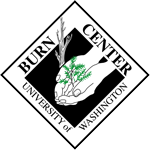As a NIDILRR-funded Burn Model System (BMS), the NWRBMS is required to engage in one site-specfic research activity: contribute data to the National Burn Model System database and collaborate with other BMS centers. The following are being conducted for the 2017-2022 NIDILRR Burn Model System grant cycle.
National Burn Model System Database
Newly injured patients are invited to become part of a longitudinal national database of burn patients. This information is used to further our understanding of the long-term consequences of burn injuries and to develop improved treatments and systems of care. Currently the database, centered at the National Burn Data & Statistical Center, contains information on more than 6,000 individuals since 1993. Interested in participation, see our Recruitment Flyer.
ReBuild: Increasing representation and building capacity for research and rehabilitation with people experiencing homelessness (PEH) and burn injry.
The goals of ReBuild are to identify and implement best practices for the enrollment and retention of PEH in longitudinal research, increase representation of this group in BMS database and NWRBMS Consumer Advisory Board (CAB), and identify and evaluate interventions that improve their quality of life of PEH after burn injury. Homelessness, particularly living unsheltered, is strongly associated with burn injury risk, sustaining more severe burn injury, and experiencing complicated recovery (e.g., greater disability, more recovery needs, less access to rehabilitation services).
ReBuild will address these issues by accomplishing 3 aims:
- Identify and implement best practices related to longitudinal research (i.e., approach, enrollment, retention) and improving access to rehabilitation services with PEH and living with a disability after burn injury.
- Identify, test and use surveys with items and patient-reported outcome measures (PROMs) relevant to the needs, experiences, and recommendations of PEH with disability.
- Evaluate the implementation of interventions and measures discovered by Aim 1 and 2, and success of increasing representation of PEH in BMS activities and access to rehabilitation services.
For more study information, contact us at nwrbms@uw.edu.
Collaborative research – Genomic predictors of functional outcomes after burn injury
The purpose of this study is to learn more about genetic factors that influence long-term physical and emotional recovery for adult burn survivors.
Study inclusion criteria include the following:
- Adult burn survivor (18 years or older) who has been enrolled in the National Burn Model System Database study.
For more study information, contact us at nwrbms@uw.edu.
Visit our Video Library for a demonstration on How To Collect a Buccal Swab Sample



